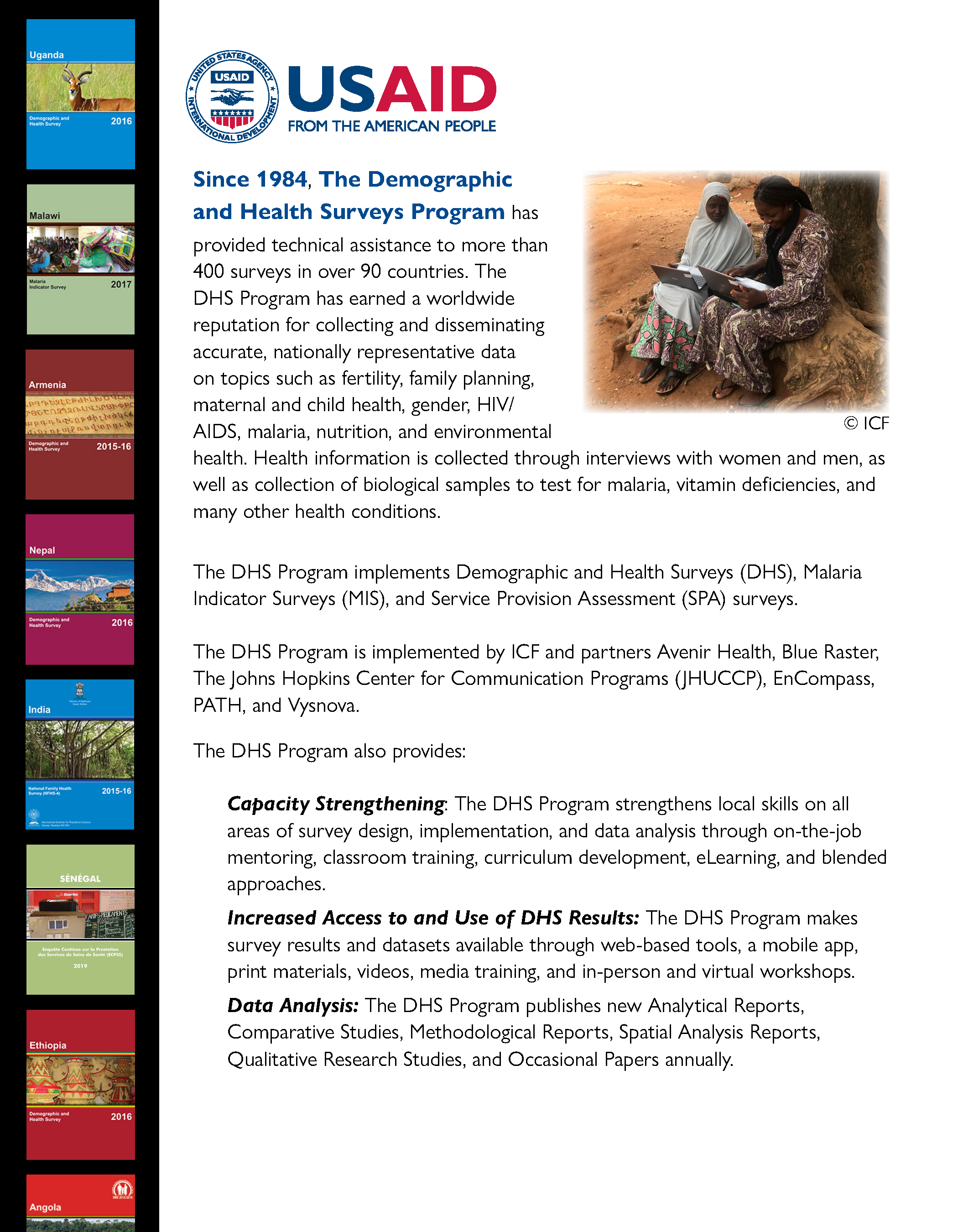Press Releases
New report links HIV prevalence to people’s characteristics and risk-taking behaviors in 22 developing countries
Calverton, MD. A new MACRO International/MEASURE DHS Comparative Report based on survey data from 22 developing countries, primarily in sub-Saharan Africa, finds substantial differences in the extent of HIV infection according to individual social and economic characteristics. Overall, HIV prevalence is higher among people who have more education and with more household wealth. For all but two countries, HIV prevalence is higher in urban than rural areas.
Such findings may reflect an association between these characteristics and sexual risk-taking, according to the report. As might be expected, higher-risk sexual behaviors are closely related to higher HIV prevalence, the surveys show. HIV prevalence increases with increasing number of lifetime sex partners. Also, having sex outside of marriage and having sex while under the influence of alcohol are associated with higher HIV prevalence. Similarly, not using condoms at last sex and/or at last sex with a higher-risk partner (a non-marital, non-cohabitating partner) are generally associated with higher HIV prevalence, especially among women.
In addition, in most countries studied:
- Youth who were under age 18 at their first sexual encounter have higher rates of HIV prevalence than other youth age 15-24.
- Among men who were away from their home at least once in the year before the survey, the number of times the person left home (but not the amount of time spent away from home during an absence) is related to higher HIV prevalence.
- Having a sexually transmitted infection (STI) in the previous year is positively associated with being HIV-infected for both men and women.
- Receiving multiple medical injections in the recent past is positively associated with being HIV-infected for both men and women.
- Women’s participation in household decision-making and their ability to negotiate safer sex with husband if he is infected with an STI are related to higher HIV prevalence.
Data for Levels and Spread of HIV Seroprevalence and Associated Factors: Evidence from National Household Surveys come from Demographic and Health Surveys (DHS) and AIDS Indicator Surveys (AIS) conducted between 2001 and 2006. In most of these surveys, nationally representative samples of adult women and men were tested for HIV permitting individual HIV test results to be linked with information on characteristics of the respondents, as well as providing direct data on the distribution of HIV infection among the general population and subgroups.
Such findings can help countries address their AIDS crises by identifying areas with high HIV infection rates and groups with higher-risk characteristics. These features help to overcome limitations of data obtained from HIV surveillance among pregnant women attending antenatal clinics. Additionally, HIV prevalence data from population-based surveys can help calibrate estimates of HIV prevalence obtained from clinic-based surveillance and can substantially improve the accuracy of national estimates of HIV prevalence in countries with generalized epidemics.
The Demographic and Health Surveys and AIDS Indicator Surveys are funded by the United States Agency for International Development through the MEASURE DHS project.
